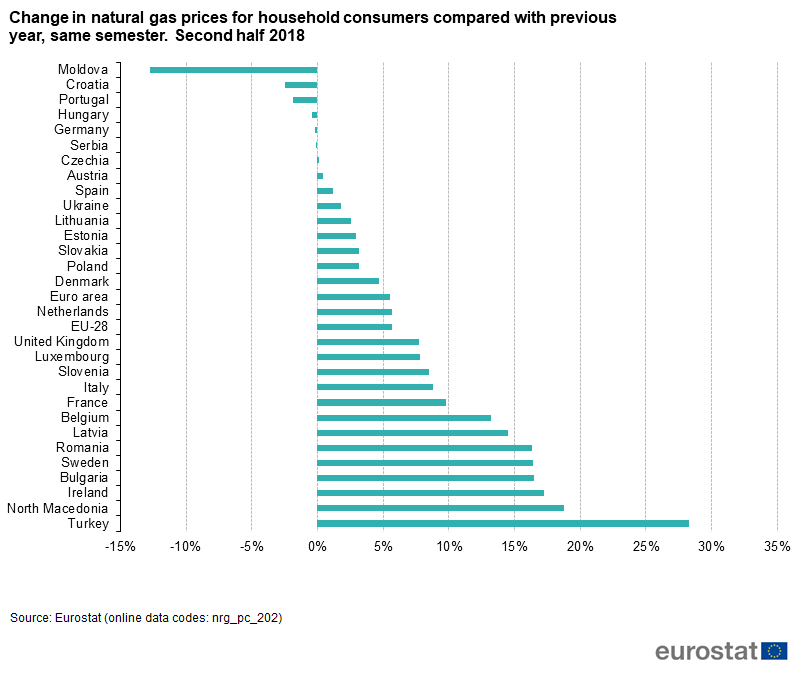Ireland had the highest increase in household gas prices in the entire European Union during 2018.
New figures from Eurostat show that prices here increased by 17. 3% last year.
In Croatia, household gas costs actually fell by 2.5%, while in Germany they decreased by 0.2%.
Household gas prices were highest in Sweden and lowest in Hungary during the second half of the year.
The price of natural gas for Swedish households was nearly four times the price that was charged in Hungary.
Eurostat said: "The price of energy in the EU depends on a range of different supply and demand conditions, including the geopolitical situation, the national energy mix, import diversification, network costs, environmental protection costs, severe weather conditions, or levels of excise and taxation."
 Change in natural gas prices for household consumers compared with previous year | Source: Eurostat
Change in natural gas prices for household consumers compared with previous year | Source: EurostatPrices fell between the second half of 2017 and the second half of 2018 in four of the 24 EU member states, for which data is available.
Cyprus, Malta and Finland do not consume natural gas in households - and Greece has marked its data as confidential.
The largest decreases were see in Croatia (down 2.5%), Portugal (-1.9%) and Hungary (-0.4%).
There were 20 states where prices rose - with the largest increases in Ireland (17.3%), Bulgaria (16.5%) and Sweden (16.4%).
Prices include taxes, levies and VAT for household consumers.
Natural gas prices for household consumers are defined as the average national price in Euro per Giga Joule (GJ), including taxes and levies, applicable for the first semester of each year for medium size household consumers.









